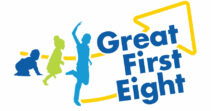Administrators Q&A
No. The curriculum is designed so that children can enter at any point up to and including kindergarten and still be successful with proper differentiation. However, the more years of the curriculum children experience, the more likely the positive and long-term impact, as each year of the curriculum builds carefully on the years prior.
Unfortunately, we don't think it would go well for a school to begin the curriculum in first grade or later, as there is just too much Great First Eight instruction that children would have missed by that point. For example, we have children reading consonant-short-vowel-consonant words and certain digraphs by the end of kindergarten, but many children are likely to come from other kindergartens in which they have not reached that milestone.
No. Critical race theory is an academic theory that is not appropriate for instruction in the birth-through-age-eight years.
We do address race in developmentally appropriate, research-informed ways, as summarized in the one-pager linked above. We also develop children’s ability to be critical. For example, in our first-grade curriculum, one social studies unit focused on economics is called Critical Consumers. One of the products of this unit are Public Service Announcements children develop about the importance of critically analyzing advertisements.
Yes. Although the curriculum itself and many materials associated with it are free, there are materials required for effective implementation that have to be purchased. This includes materials for science investigations and a large number of published children’s books for read alouds. There are also materials that need to be printed, such as our alphabet chart and books we have written for young children to read. We are working hard to secure an agreement with a compiler that will fulfill materials orders to up to 50 schools implementing Great First Eight Kindergarten in ‘23 - 24. To inquire about participating in the Vanguard group of implementers please see the Teachers or Administrators page of the website. We will have an estimate of classroom materials costs determined soon. If you submit an inquiry, we will notify you once cost information is available.
Please note that in addition to required materials, there are technology requirements for Grades K and above, including tablets or touch-screen devices, styluses, and headphones for every child in K - 2, and costs related to required professional development time for teachers and coaches. Materials Lists and a full list of technology requirements are located in Great Gate, which can be accessed by creating a free account and logging in.
